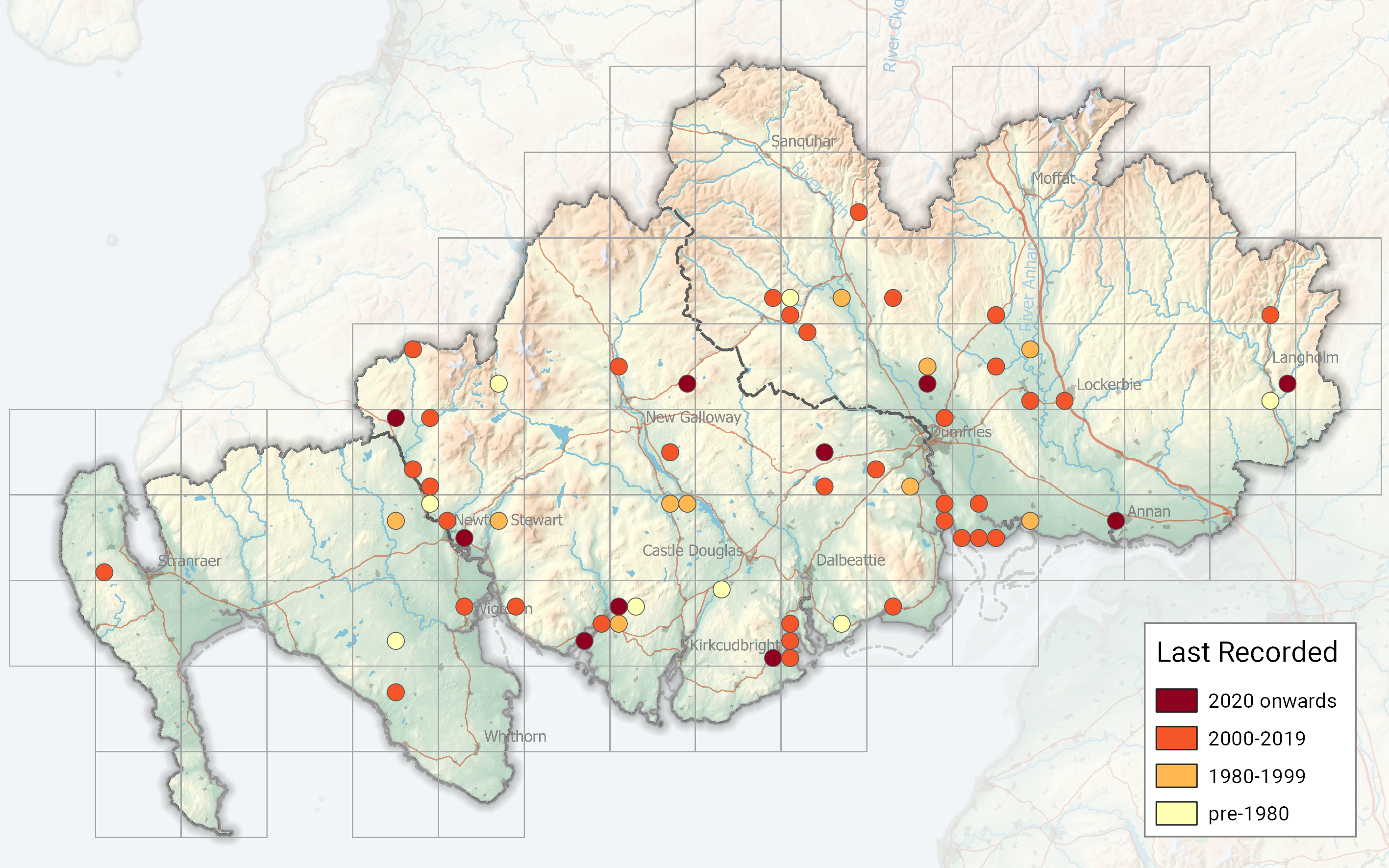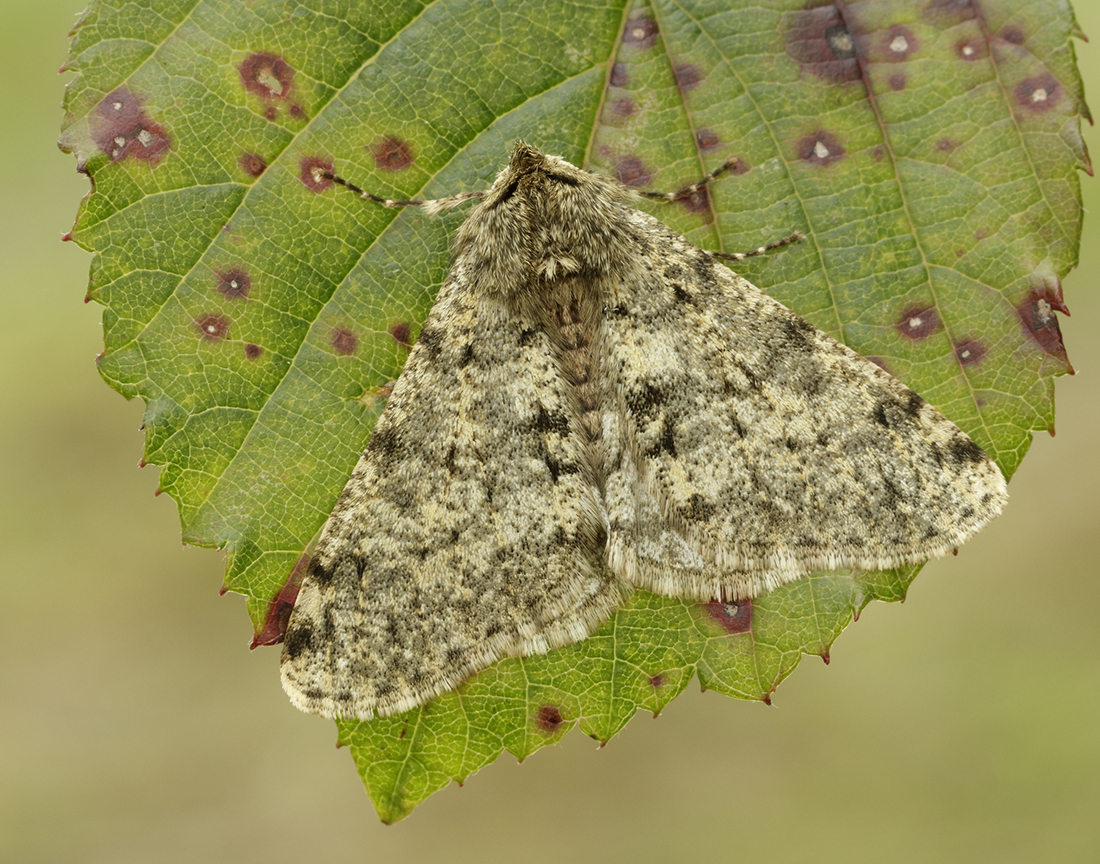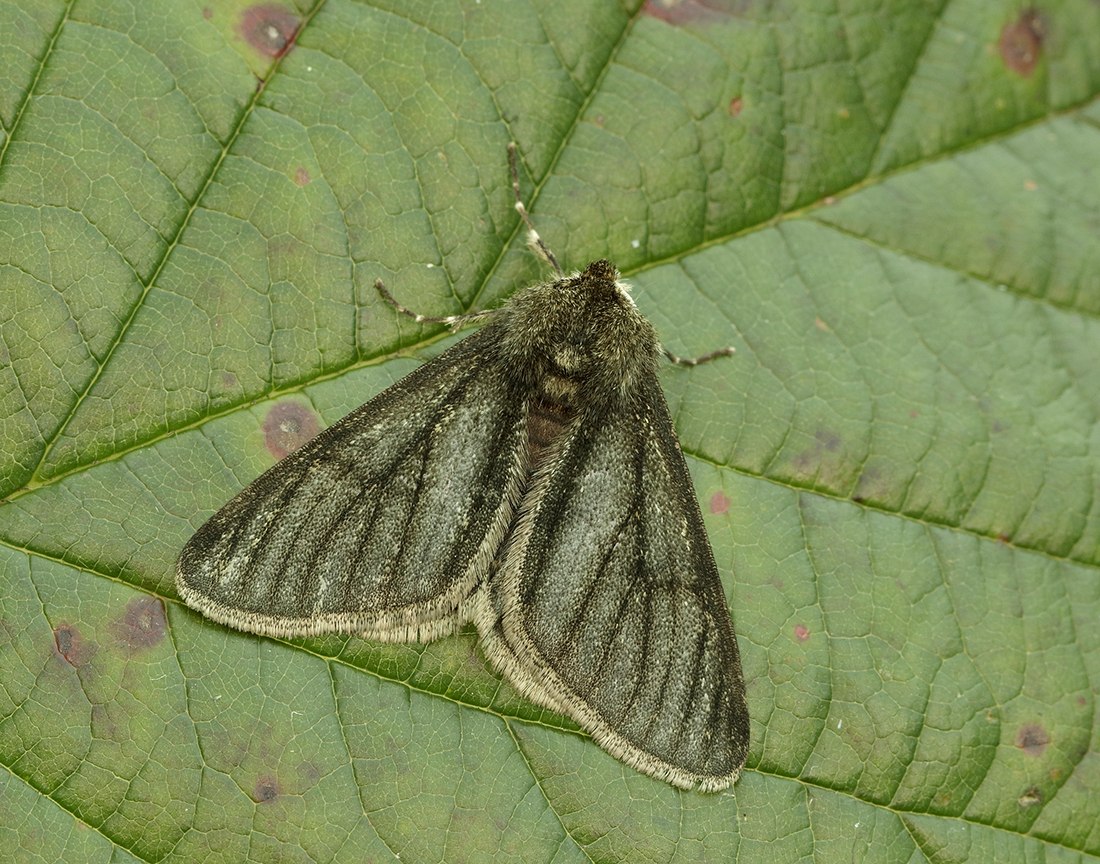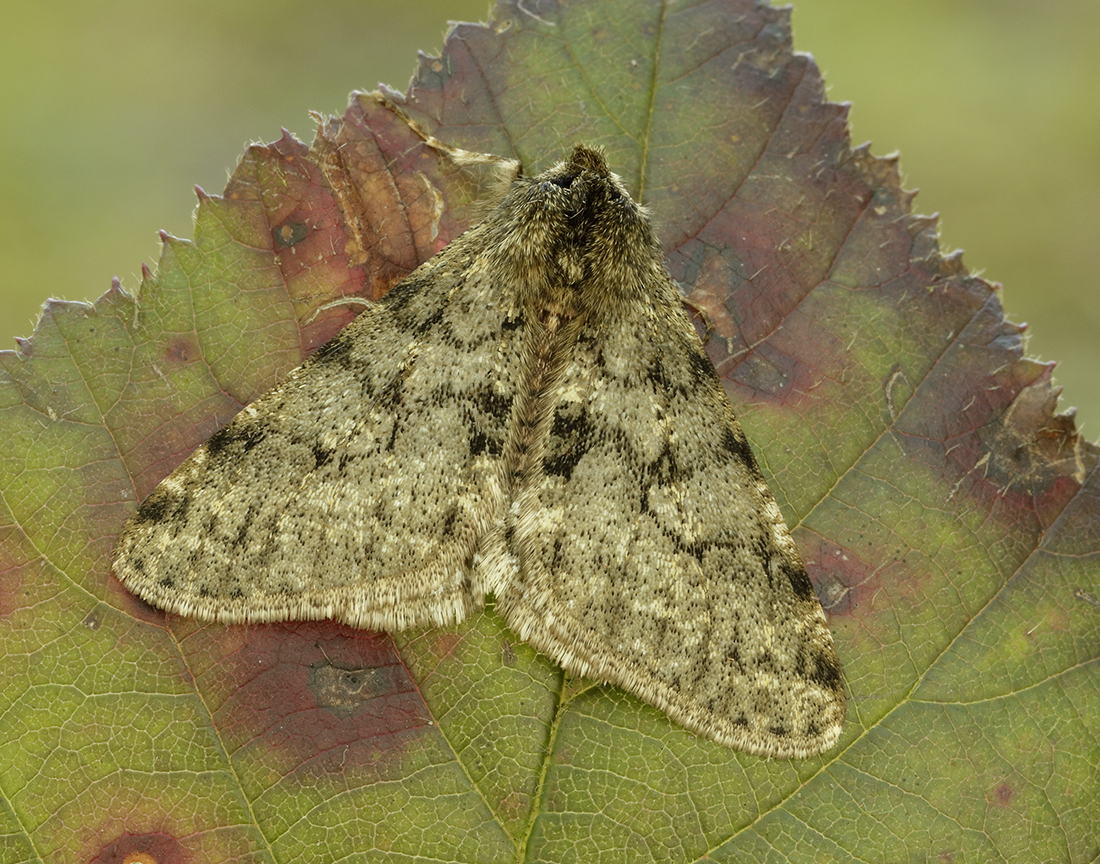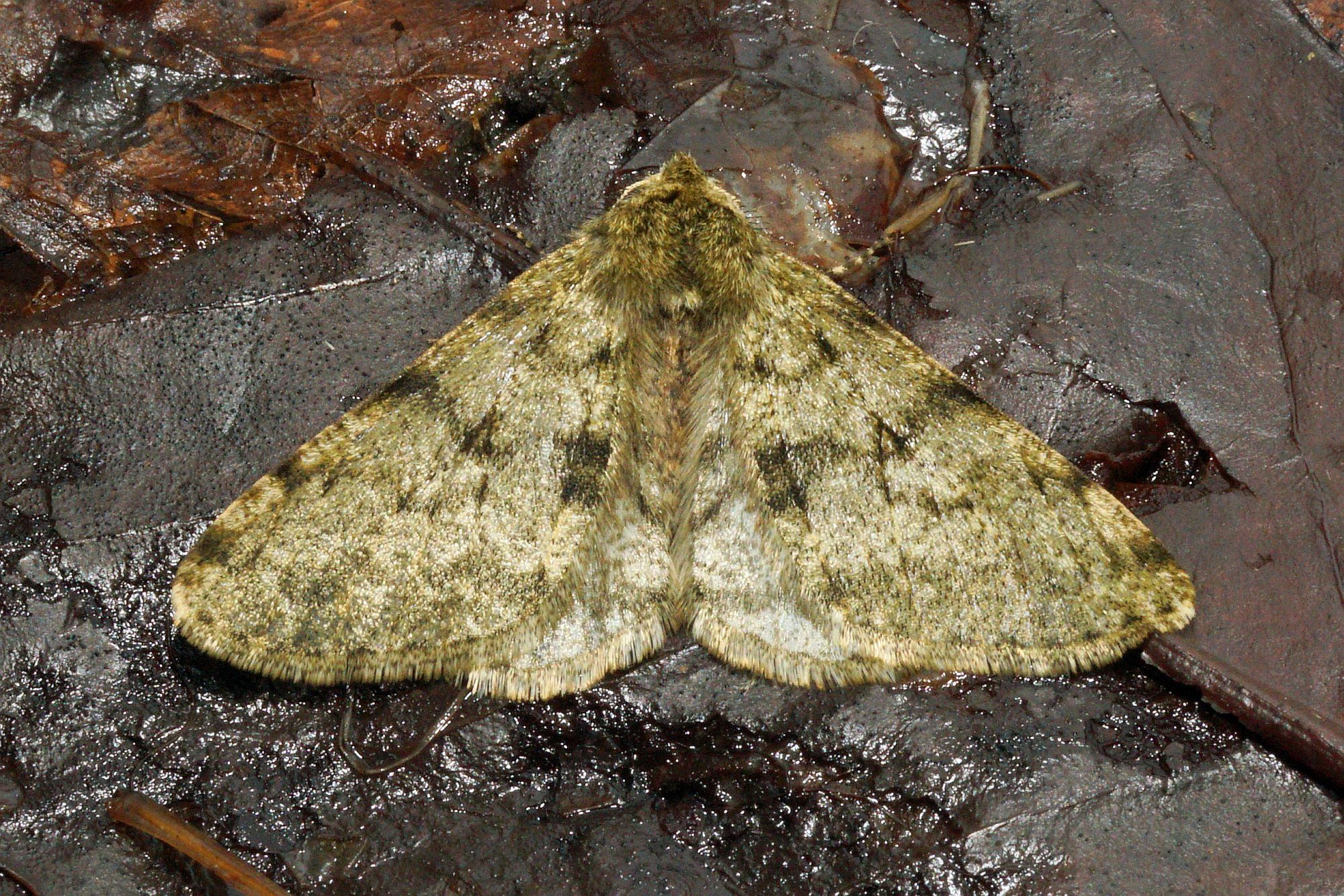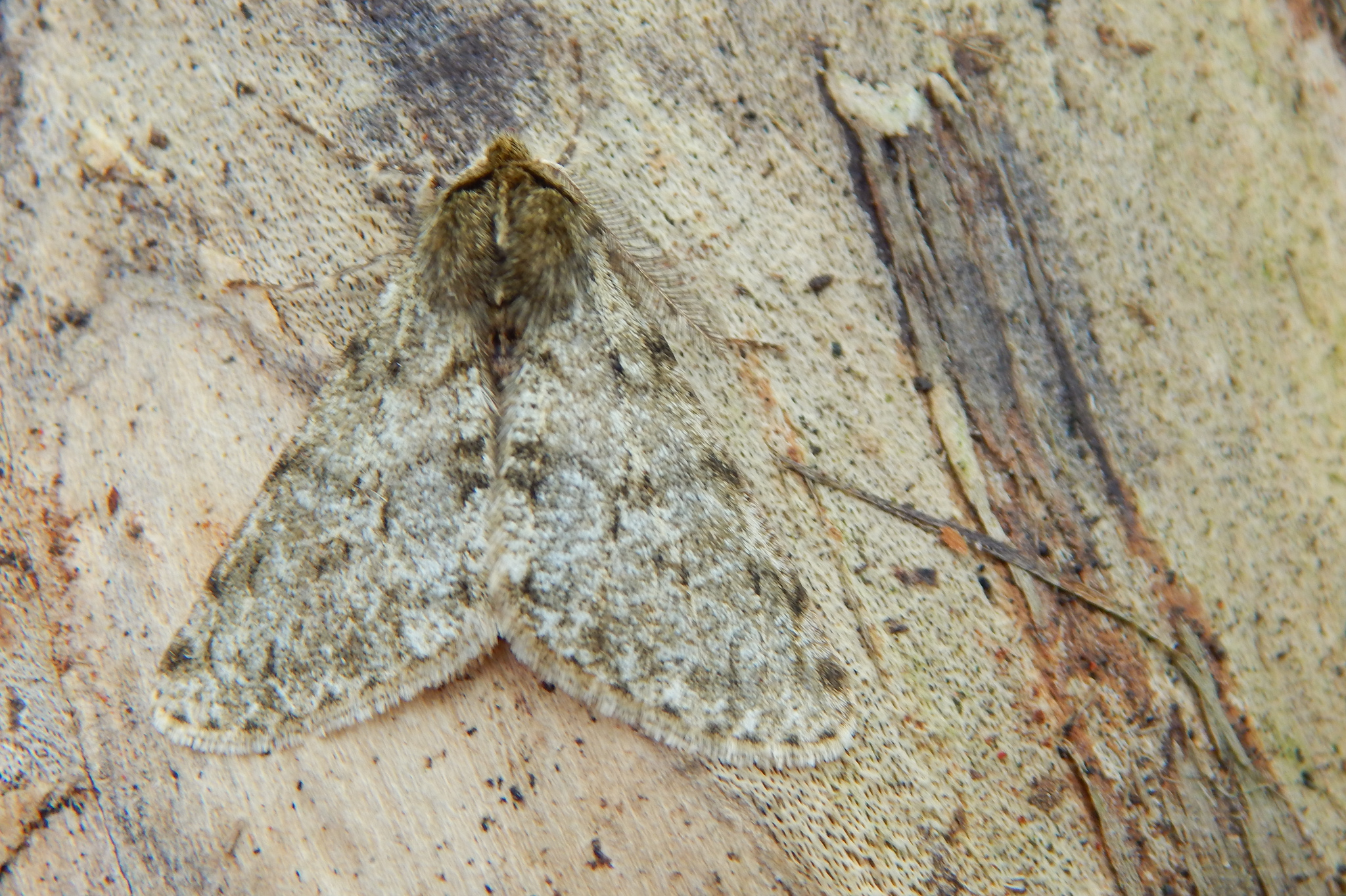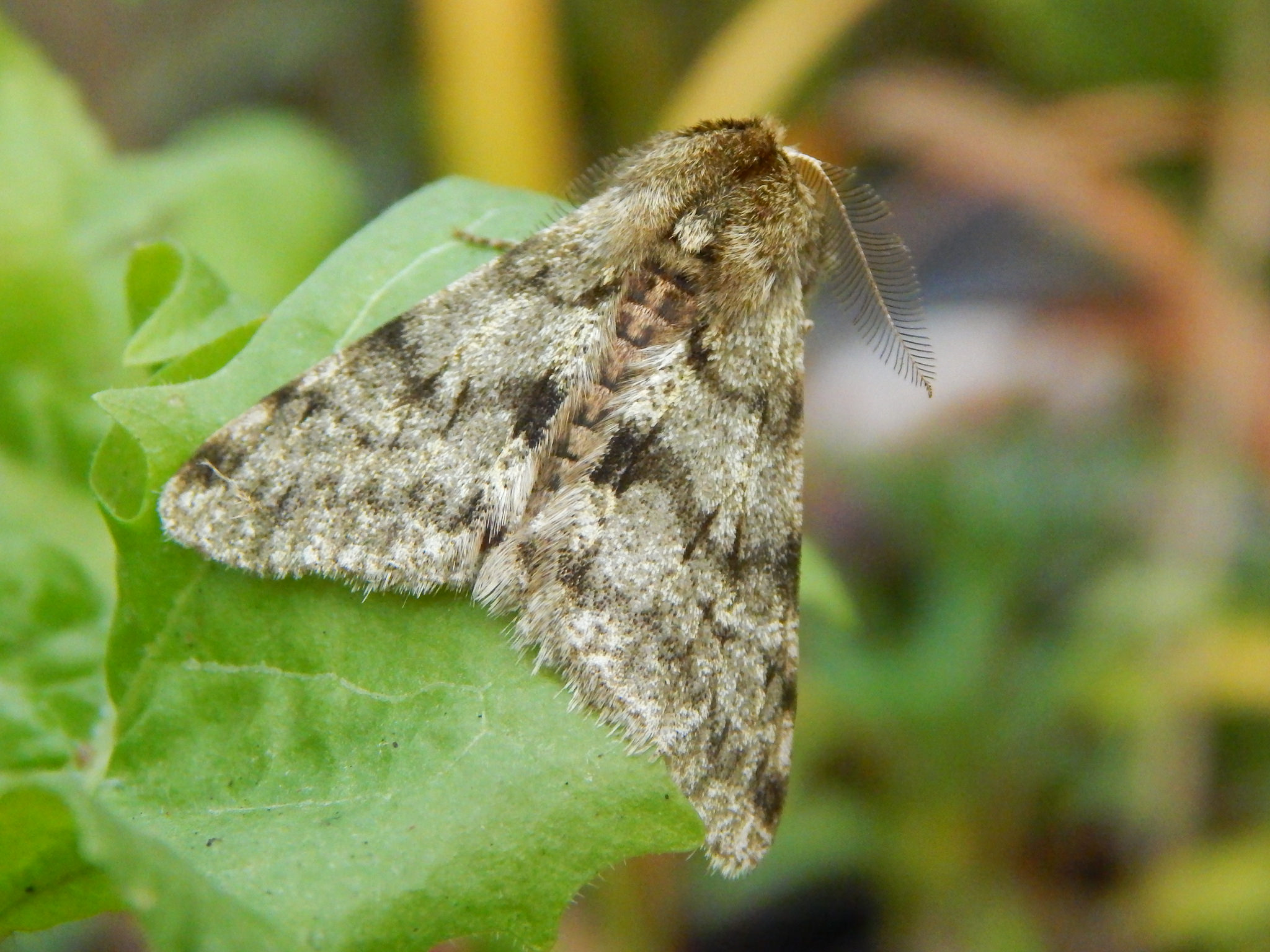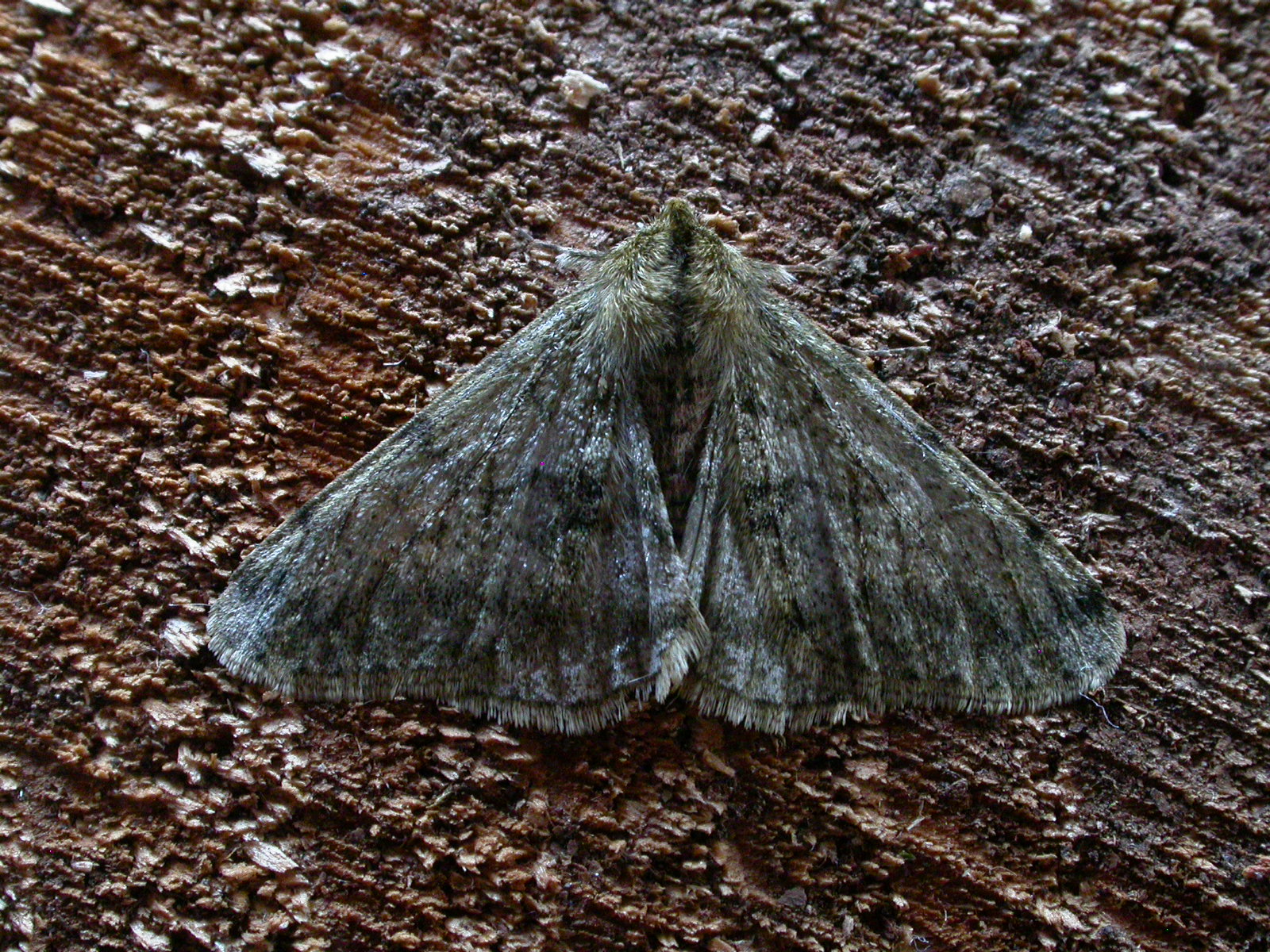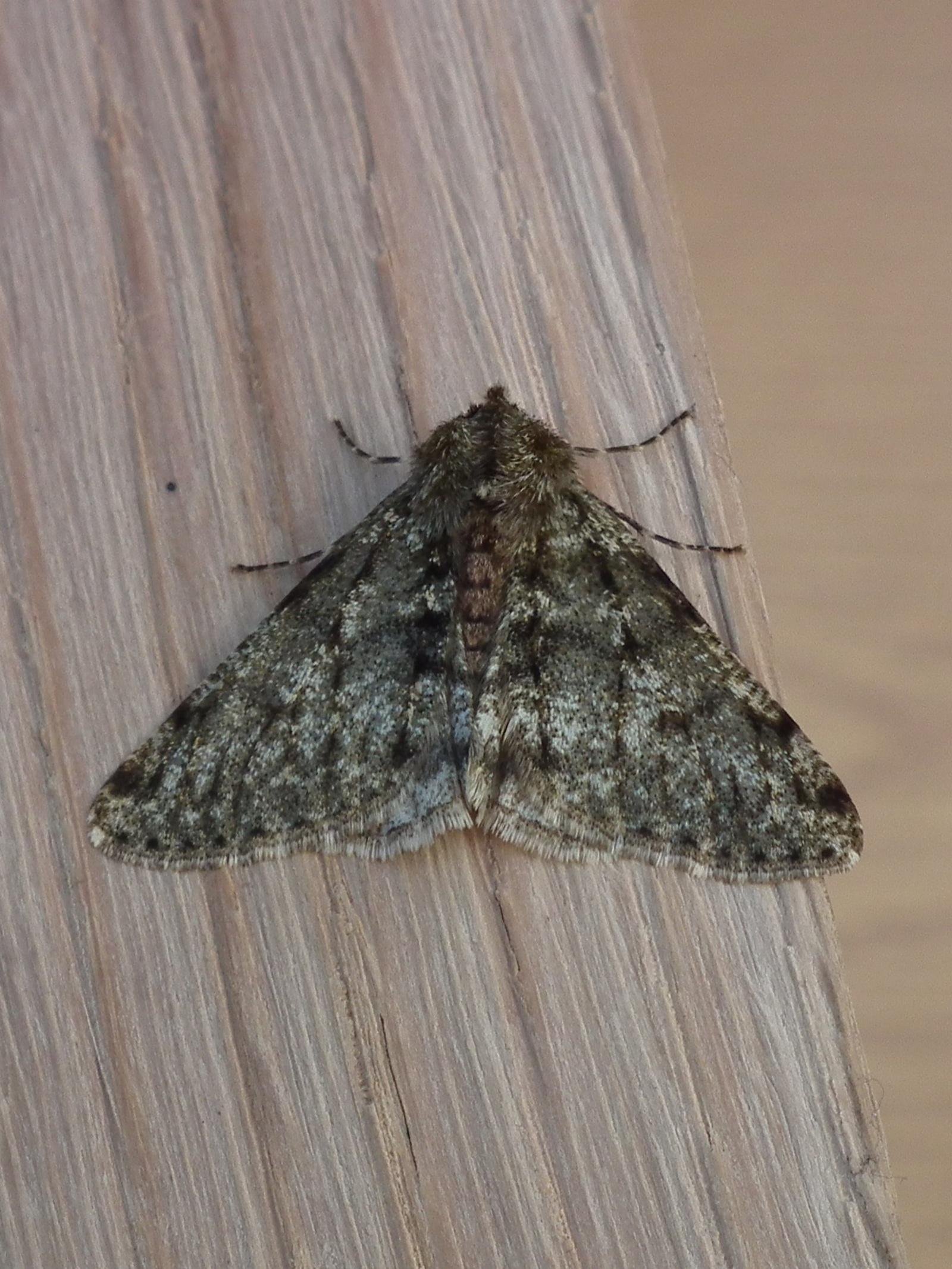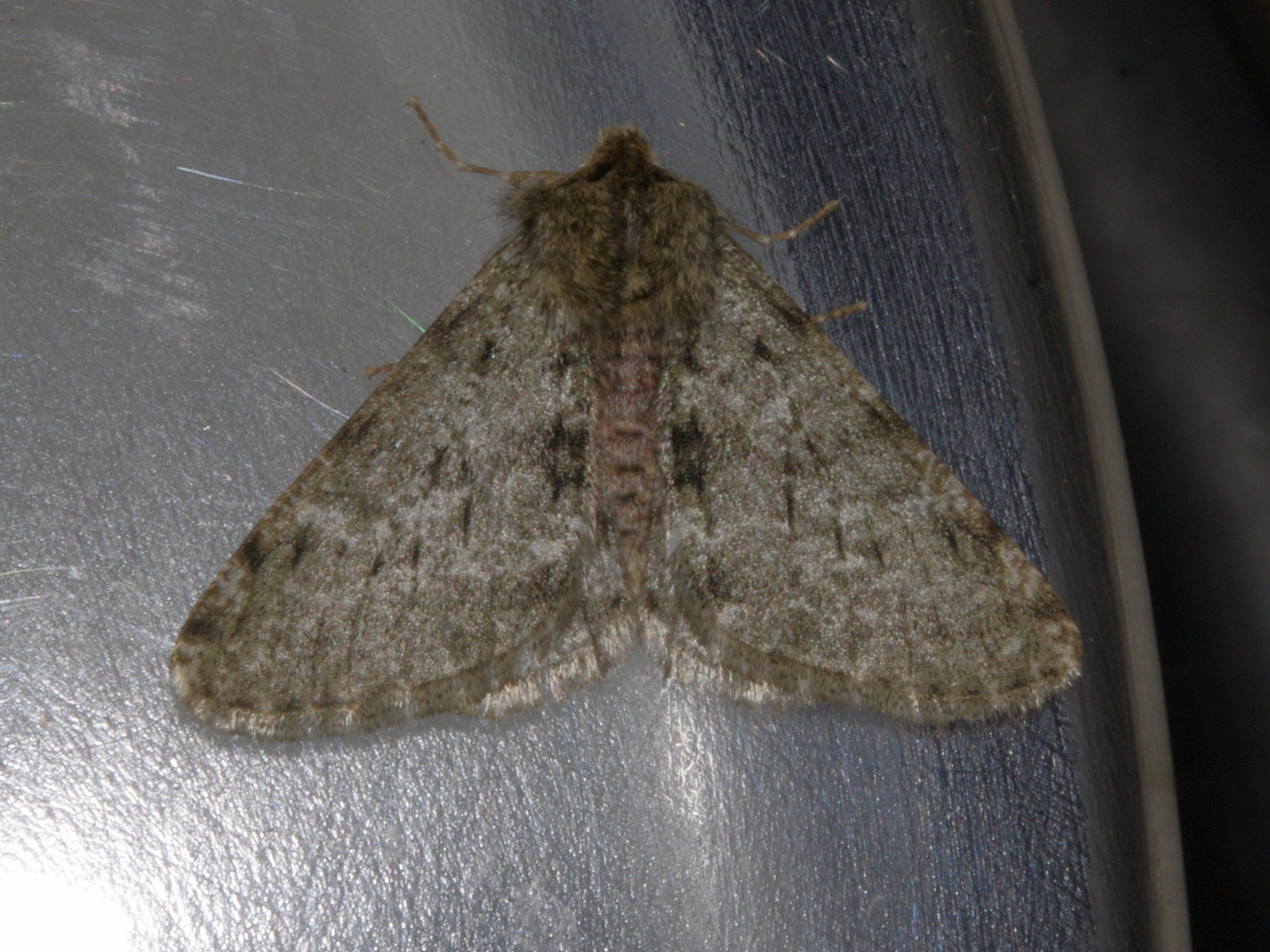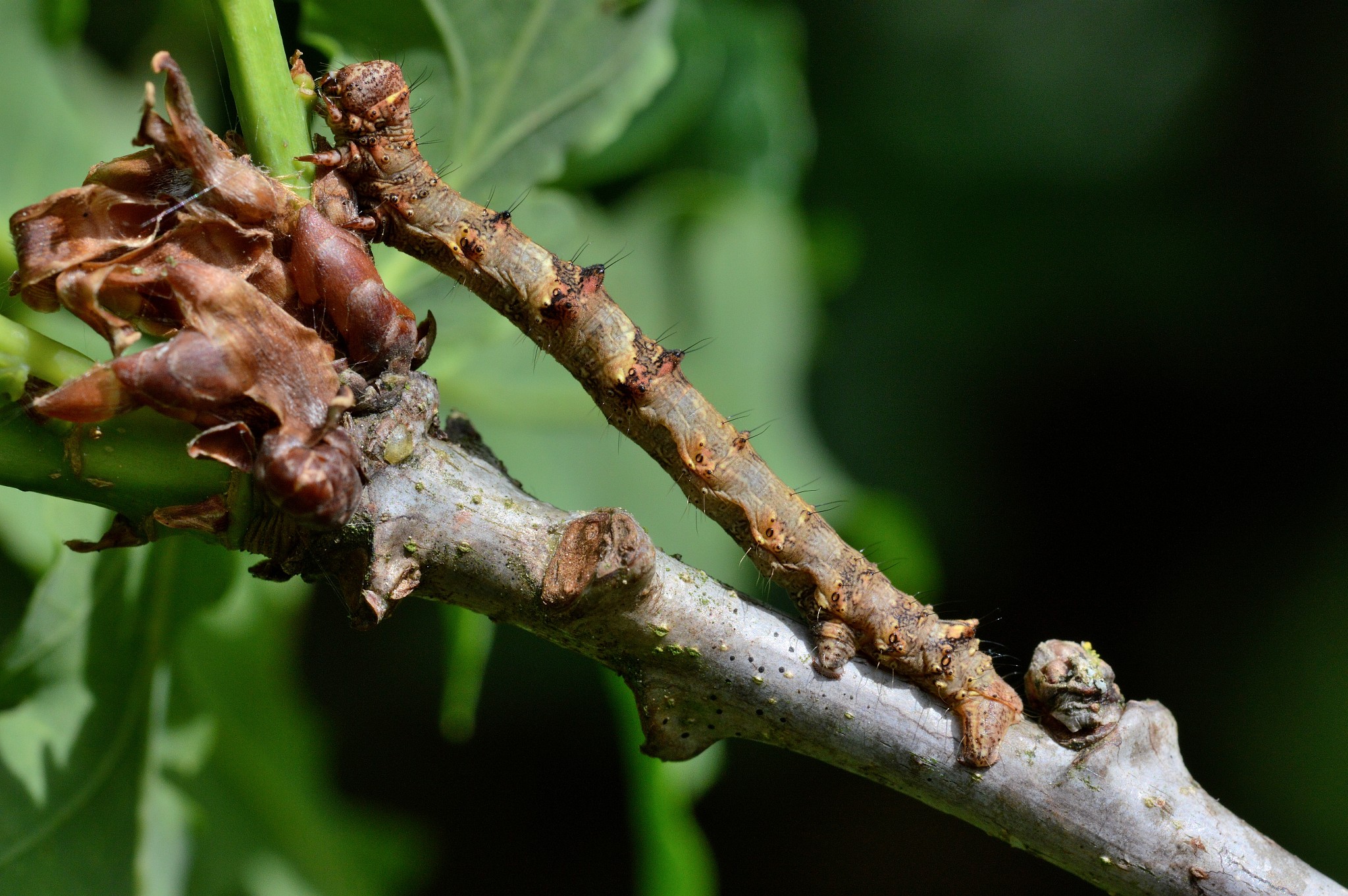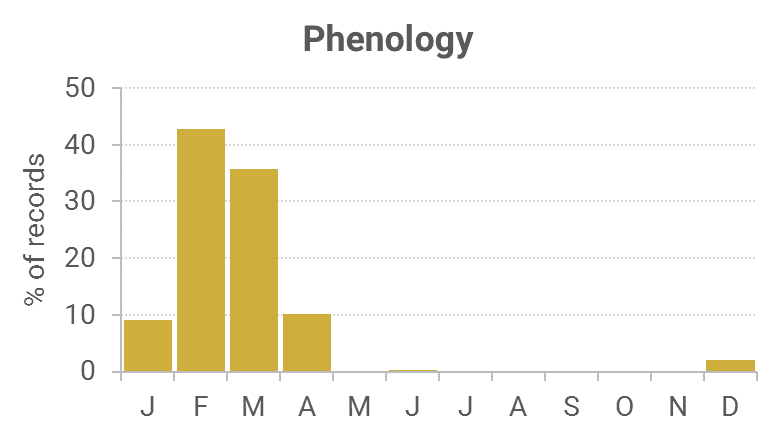Identification
Care required to separate from Brindled Beauty during late March and April. Male is slightly smaller than Brindled Beauty. The dark brindle markings and pinkish abdomen will help to identify, but the all-dark brown f. monacharia has also been recorded. Female is flightless. Please record the sex.
Recording method
Females can be found low on tree trunks at dawn, males come to light.
Life cycle
One Generation. Overwinters in an underground cocoon as a pupa. Larvae are present mid April to mid-June.
Larval foodplants
A wide variety of broadleaved trees and shrubs.
Habitat
A wide variety of areas as long as trees and shrubs are there.
History
First recorded for Dumfries and Galloway in 1906 for VC74 at Corsemalzie by Gordon who had found it ‘common on tree trunks’ and found ‘larvae abundant on elms in the woods’, in 1930 for VC72 at Closeburn by Duncan and in 1942 for VC73 near Gatehouse of Fleet by Russell.
Cunningham in 1949 recorded the first all-dark brown form monacharia at Tynron (VC72) on 14th February.

